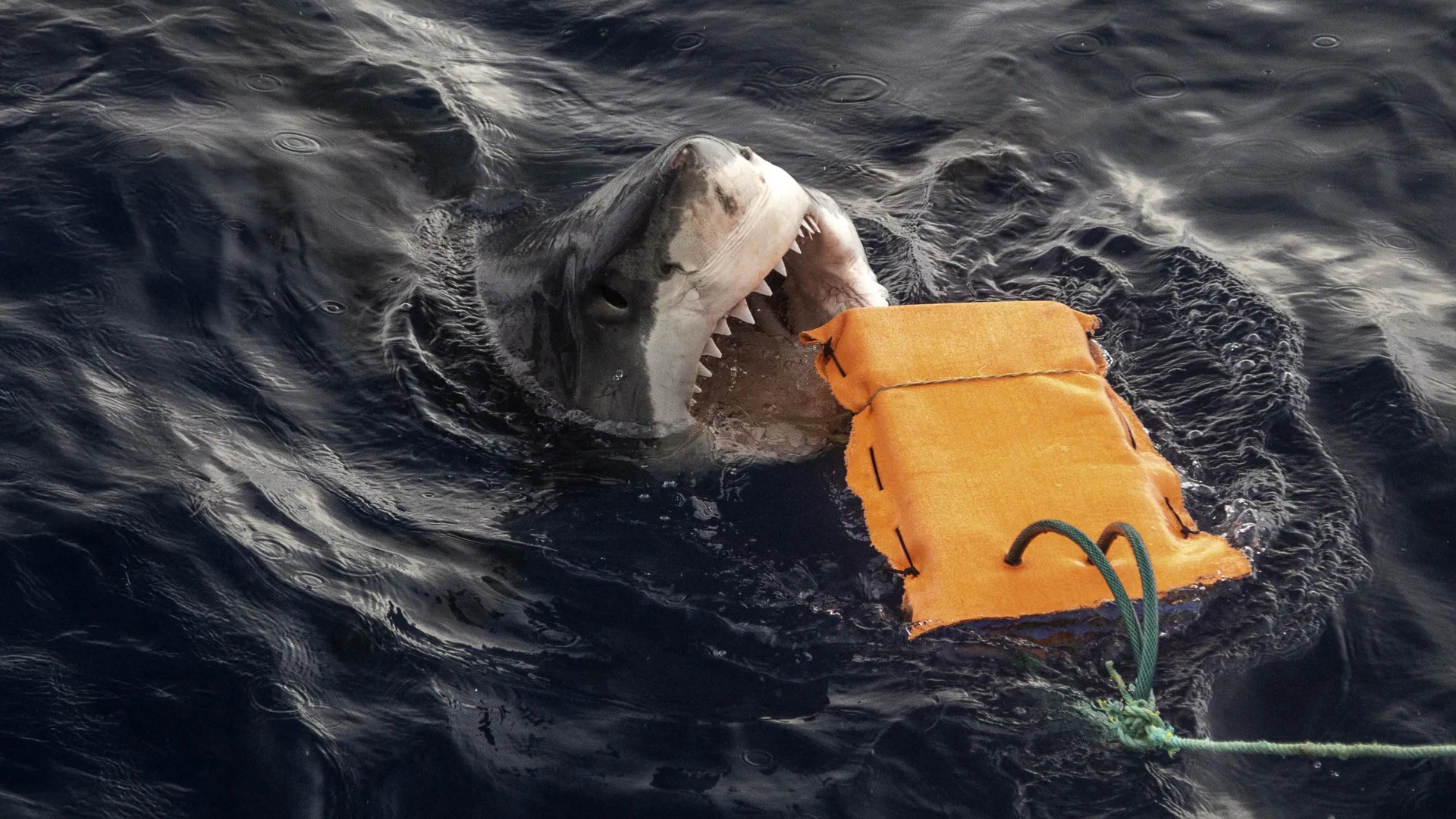Breakthrough wetsuits slash shark attack injuries and save lives
- Date:
- September 25, 2025
- Source:
- Flinders University
- Summary:
- Shark experts tested four innovative wetsuit materials to measure how well they reduce shark-bite injuries. The results show they can lessen major trauma, blood loss, and even save lives when compared to standard neoprene. While not a perfect shield, these suits represent a leap forward in personal protection.
- Share:

Australian shark experts have tested four bite-resistant materials to assess their ability to reduce injuries and blood loss.
While internal and crushing injuries may still occur, bite-resistant wetsuits can now be added to the 'toolkit' of measures available to reduce shark-bite risk and resulting injuries, say researchers from Flinders University's Southern Shark Ecology Group.
Shark bites on humans are uncommon but can severely impact local coastal communities and businesses, especially where water-based tourism and recreation are common, often prompting pressure for better bather protection strategies.
Governments are often focused on area-based protection, but as recent studies have shown there is also increasing focus on personal deterrents and/or other personal mitigative measures, such as bite-resistant wetsuits
Funded by the NSW Department of Primary Industries and Regional Development Shark Management Program, the study tested the efficacy of four bite-resistant wetsuit materials (Aqua Armour, Shark Stop, ActionTX-S and Brewster material) to reduce damage incurred from white and tiger shark bites.
Traditional chainmail suits were protective but too inflexible and heavy for activities like surfing or diving. New wetsuits that incorporate strong and light fibre often used in sailing rope, ultra-high molecular weight polyethylene, offer both flexibility and protection, making them more suitable for recreational use.
Dr Tom Clarke, Professor Charlie Huveneers, and experts from New South Wales Department of Primary Industries and Regional Development assessed each material's potential in reducing injuries from white and tiger sharks by quantifying the amount of bite damage across four categories of increasing severity (ranging from 'superficial' to 'critical') and comparing it to damage on standard neoprene.
"While there were small differences between the four tested materials, they all reduced the amount of substantial and critical damage, which would typically be associated with severe hemorrhaging and tissue or limb loss," says Dr Clarke, from the College of Science and Engineering at Flinders University.
White and tiger sharks are responsible for the most unprovoked bites and are two of the top three species with the highest rate of fatal bites. Interactions between humans and sharks continue to rise in frequency globally, with expanding coastal populations and rising popularity of marine activities.
"Our study showed that bite-resistant materials incorporated into wetsuits can reduce damage from large white and tiger sharks (>3 m) compared to standard neoprene wetsuit, even from moderate and severe bites."
"While these suits don't eliminate all the risk (e.g., internal injuries may still occur), our results indicate that they can reduce blood loss and trauma from major lacerations and punctures, potentially saving lives," says Prof Huveneers, from the College of Science and Engineering at Flinders University.
"Our findings will allow for informed decisions to be made about the use of bite-resistant wetsuit materials for occupational activities, as well as enabling the public to make appropriate decisions about the suitability of using these products."
Key points:
- Wetsuits that incorporate bite-resistant materials have emerged as a new mitigation strategy that aims to reduce fatalities from shark bites, by reducing the severity of injuries inflicted from bites (e.g. lacerations, punctures, tissue and blood loss).
- As shark-bite mitigation continues to shift from traditional lethal methods towards non-lethal alternatives, personal protective measures such as electric deterrents and protective wetsuits continue to gain interest as tools to reduce the number of interactions and injuries, and increase the likelihood of survival.
Acknowledgement: This study was funded by the NSW Department of Primary Industries and Regional Development Shark Management Program, and Australian Research Council Linkage (project LP190100992). No funding was obtained from any of the material inventors or manufacturers.
Story Source:
Materials provided by Flinders University. Note: Content may be edited for style and length.
Journal Reference:
- Thomas M. Clarke, Paul A. Butcher, Marcel Green, James Whitelaw, Lauren Meyer, Charlie Huveneers. Effectiveness of bite-resistant materials to reduce injuries from white shark (Carcharodon carcharias) and tiger shark (Galeocerdo cuvier) bites. Wildlife Research, 2025; 52 (10) DOI: 10.1071/WR25019
Cite This Page: